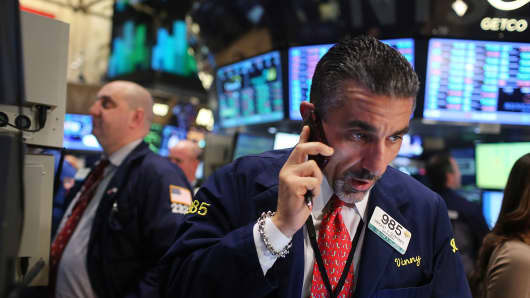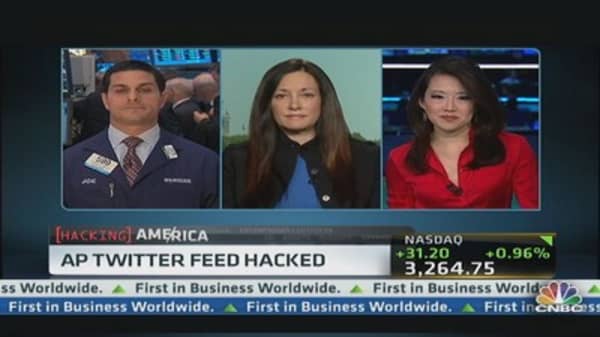One trader was meeting with his head of trading when someone came running at full speed into the office saying, "You've got to get in here. The market just dropped 20 handles."
By the time they ran back out, the market had already recovered.
(Read More: False Rumor of Explosion at White House Causes Stocks to Briefly Plunge; AP Confirms Its Twitter Feed Was Hacked)
The Dow plunged at 1:07 p.m. ET after an AP tweet stated there were explosions at the White House and the president had been injured. By 1:11 p.m., the market had recovered almost all of the decline and a reporter from the AP had quickly tweeted out that their account had been "hacked."
Coming in the wake of the Boston tragedy, this seemed to catch an already jittery market. The CBOE Volatility Index — the market's so-called fear gauge — shot higher by 7 percent shortly after the false tweet.
"I went over the hoot and yelled out to the floor what the AP was saying, but I made sure to add that it was on their Twitter feed," said another trader. "Another guy yelled out, 'Watch your positions, make sure you know where your risk is.'"
It seems those doubts about the tweet's legitimacy were the one thing that saved many firms from losing a lot of money. Especially a tweet from a news organization that has a news wire that it sends information out first to customers. The fake tweet headline was never on the AP feed.
"Everyone just canceled their bids and waited for more info," said one trader at a major New York trading firm as someone else on his floor shouted, "I've got it on Twitter, but nowhere else."
As many human traders were able to protect their clients and wait for clarification, that likely wasn't the case for many of the high-frequency firms which have all kinds of algorithms set for when prices hit certain levels. Many of them likely sold heavily during the drop, losing on that trade when the market recovered.
"The HFTs lost millions of dollars on this one," said one trader.
For the best market insight, catch "Fast Money" at 5 p.m. ET, and the "Halftime Report" at 12 noon ET each weekday on CNBC. Follow @CNBCMelloy on Twitter.





